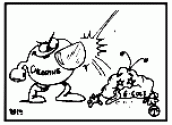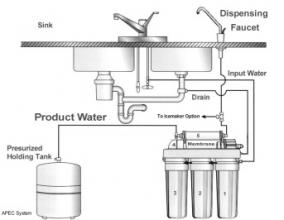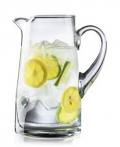- Your Government
-
Our Community
-
- About St. Helens History of St. HelensState of the CityCourthouse Dock Camera
- Local Events City Calendar Citizens Day in the ParkRecreation Activities Discover Columbia County Sand Island CampingKeep It Local CC
- Community Resources City Newsletter City Social Media Emergency Services New Resident InformationProtecting Our Environment
-
-
Business & Development
-
- Local Business Directory Get a Business License City Bids & RFPs Broadband Study
- Business in St. Helens St. Helens Advantages Directions & Transportation Incentives & Financing Resources for Businesses Business Guide Columbia Economic Team Chamber of Commerce
- Current City Projects Waterfront Redevelopment Public Safety Facility Strategic Work Plan
-
-
How Do I?
-
- Apply for a Job Apply for a Committee Find A Park Find COVID Info Find Forms Follow St. Helens - Facebook Follow St. Helens - Twitter Follow St. Helens - YouTube
- Get a Police Report Get a Business License Get a Library Card Get a Building Permit Newsletter Signup Past Public Meetings Pay My Water Bill
- Public Records Request Report a Nuisance Register for Rec Activity Reserve a Park Sign Up for the 911 Alerts Universal Fee Schedule
-
Why is there Chlorine in my Drinking Water?
Why is Chlorine added to your drinking water?
 The main objective is to control pathogenic (path-oh-jenn-ick), (disease-causing) microorganisms by
The main objective is to control pathogenic (path-oh-jenn-ick), (disease-causing) microorganisms by destroying or inactivating them to meet the goal of providing a clean, safe and reliable source of drinking water to our consumers. In addition to controlling disease-causing organisms, chlorination offers a number of benefits including:
destroying or inactivating them to meet the goal of providing a clean, safe and reliable source of drinking water to our consumers. In addition to controlling disease-causing organisms, chlorination offers a number of benefits including:
- Reducing many disagreeable tastes and odors;
- Eliminating slime bacteria, molds and algae that commonly grow in water supply reservoirs, on the walls of water mains and in storage tanks;
- It removes chemical compounds that have unpleasant tastes and hinder disinfection; and
- Helps remove iron and manganese from the raw incoming water to the treatment facility.
Prior to 1908, no U.S. municipal water system chemically disinfected water, consequently, waterborne diseases such as Cholera, Typhoid fever, Dysentery and Hepatitis A exacted a heavy toll in illness and killed thousands of U.S. residents annually. Without chlorination or other disinfection processes, consumers are at great risk of contracting many waterborne diseases. (In 1908, Chicago and Jersey City were the first cities in the U.S. to begin routinely treating drinking water with chlorine.)
Although these pathogens are defeated regularly now by the technological advancements in filtration methods and disinfection practices, such as Ultra-Violet sterilization, Ozonation and chlorination, those pathogens should be thought of as ever-ready to stage a come-back given conditions of inadequate or no disinfection occur, such as during flooding conditions like we have seen around the United States recently and in the past year of 2015.
Why is there Chlorine in the water distribution mains and my house tap?
In storage and distribution, drinking water must be kept safe from microbial contamination. Frequently, slippery films of bacteria, known as biofilms, develop on the inside walls of distribution mains and storage containers (reservoirs). Maintaining a chlorine residual in the treated water is a measure of protection against harmful microbes the water may encounter after leaving the treatment facility. In the event of a significant intrusion of pathogens resulting, for example, from a broken water  main or
main or  flooding conditions, the chlorine residual present in the pressurized, filtered water in the main will be sufficient to disinfect the contaminated water that may have infiltrated the water line. In such cases of a water main break, the chlorine residual is regularly monitored and samples of the drinking water are taken to be tested in a laboratory for bacterial contamination. These procedures provide the water system operators vital information to show them and the public that there was not a contamination of the drinking water during the event. Your drinking water is sampled regularly every month and tested for bacterial contamination, pH and the chlorine residual at various locations in the cities distribution system.
flooding conditions, the chlorine residual present in the pressurized, filtered water in the main will be sufficient to disinfect the contaminated water that may have infiltrated the water line. In such cases of a water main break, the chlorine residual is regularly monitored and samples of the drinking water are taken to be tested in a laboratory for bacterial contamination. These procedures provide the water system operators vital information to show them and the public that there was not a contamination of the drinking water during the event. Your drinking water is sampled regularly every month and tested for bacterial contamination, pH and the chlorine residual at various locations in the cities distribution system.
How can I remove the chorine from my drinking water? I don’t like the taste.
Since water is an essential part of your everyday life, you might wonder how to remove chlorine from water at home. You want the water that you drink to be safe and clean. Remember, Chlorine is added to tap water to kill off harmful bacteria. One solution to the problem of no chlorine in your water is buying bottled water, but that can get expensive and it isn’t good for the environment. Here are some suggestions to remove chlorine from water at home.
Use a water filter
There  are many different brands of pitchers available on the market that have built in filters. Some of these filters can be attached to your kitchen faucet.
are many different brands of pitchers available on the market that have built in filters. Some of these filters can be attached to your kitchen faucet.  These activated charcoal filters remove chlorine and other impurities from your drinking water, but NOT bacteria or viruses. Some of these filters, such as reverse osmosis, can be very expensive, though they are still often cheaper over time than buying bottled water, and they are better for the environment. For example, my home refrigerator happens to have a water tap in the door, and the tap is supplied by the water being run through a carbon filter before it is dispensed.
These activated charcoal filters remove chlorine and other impurities from your drinking water, but NOT bacteria or viruses. Some of these filters, such as reverse osmosis, can be very expensive, though they are still often cheaper over time than buying bottled water, and they are better for the environment. For example, my home refrigerator happens to have a water tap in the door, and the tap is supplied by the water being run through a carbon filter before it is dispensed.
Install a small water treatment system
Better yet, install a water ionizer with treatment capabilities that include filtration and chlorine removal. Although the u pfront cost of installing a water ionizer treatment system is greater than using the boiling method, or buying a water pitcher with a filter in it, over time this option can be very cost efficient. Not only do you get the benefits of removing the impurities and chemicals like chlorine from your water, you also end up with alkaline water which has many health benefits and uses that you won’t get from tap or water that has only been filtered.
pfront cost of installing a water ionizer treatment system is greater than using the boiling method, or buying a water pitcher with a filter in it, over time this option can be very cost efficient. Not only do you get the benefits of removing the impurities and chemicals like chlorine from your water, you also end up with alkaline water which has many health benefits and uses that you won’t get from tap or water that has only been filtered.
Using Ascorbic acid (vitamin C) or the “gassing off” method
 Another way to remove the chorine is by simply using a thin slice of lemon. The ascorbic acid in the
Another way to remove the chorine is by simply using a thin slice of lemon. The ascorbic acid in the lemon neutralizes the chlorine and adds “character” and a dash of color to your glass of water. Some even use a Vitamin C tablet dissolved in a pitcher of water. When I was growing up, my dad would fill a pitcher with water and put it in the refrigerator, and in a few hours, the chlorine had “gassed off” and the water was now a refreshing, ice cold pitcher of water.
lemon neutralizes the chlorine and adds “character” and a dash of color to your glass of water. Some even use a Vitamin C tablet dissolved in a pitcher of water. When I was growing up, my dad would fill a pitcher with water and put it in the refrigerator, and in a few hours, the chlorine had “gassed off” and the water was now a refreshing, ice cold pitcher of water.
Use Immediately. Chlorine is added to water to make it safer to store and transport. Once the chlorine has been removed, the water should be used as soon as possible, or kept refrigerated, capped or covered, because it no longer has the defense, or disinfecting, mechanism to fight off stray bacteria or viruses, some of which are in the air we breathe. (like when someone sneezes, the exhaling cough makes the “germs” airborne)
In conclusion
Being responsible for the production and delivery of a safe, clean and reliable source of drinking water to over 12,000 individuals in our community 24 hours a day, 7 days a week provides me, as your water plant operator, a true sense of accomplishment. When I see areas being devastated by flood, hurricanes, tornadoes or other weather distressing events, I appreciate having the chlorine taste in my glass of water, and especially if these events were happening in our own locale. Here at the water treatment plant I keep a gallon jug of water in our office refrigerator. Overnight, the chlorine dissipates and we are left with an ice-cold jug of water. This is the water we offer to our guests and visitors, and oh, drink ourselves.
I hope this article has provided for you information to help you develop a working knowledge of why we add chlorine to your drinking water.
 E-mail:
E-mail: 
Phone: 503-397-1311
 Return to the Water Filtration Facility Homepage
Return to the Water Filtration Facility Homepage

